The F/A-18A Hornet was the first of the true modern multi-role fighters, equally able to take on air and ground targets, and later versions of the aircraft have continued that legacy. But as flight is a prerequisite to being able to fill either role, it first bears looking at the Hornet family as aircraft.
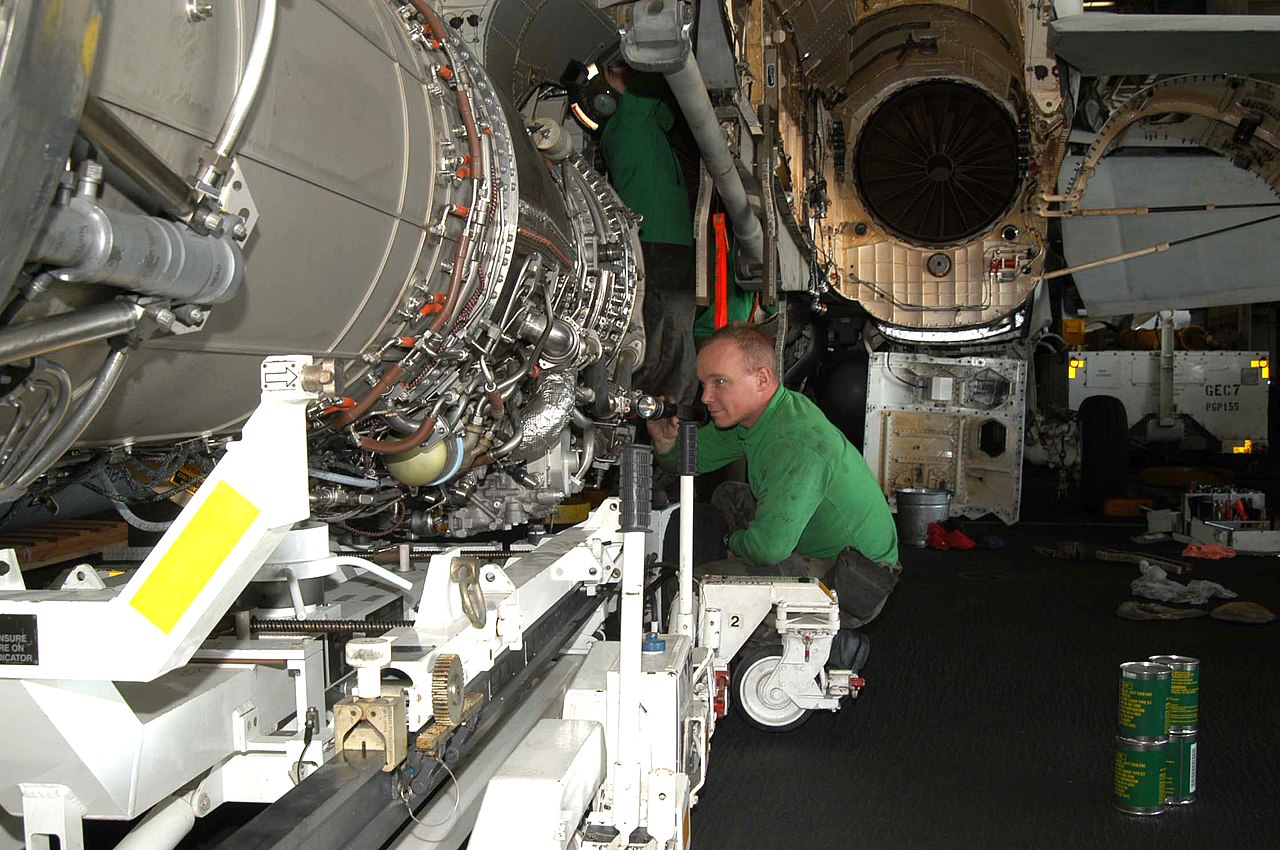
An F414 engine undergoes maintenance
Visually, all Hornets are quite similar, high-wing jets with twin tails canted outward, although they differ considerably in size. The Legacy Hornet is 56'1" long, has a wingspan of 40', and weighs 23,000 lb empty and 51,900 lb fully loaded. The Super Hornet is 60' long, has a wingspan of 44'8", and weighs 32,000 lb empty and 66,000 lb fully loaded. Propulsion comes from two General Electric engines, F404s for the Legacy Hornet, and F414s for the Super Hornet. These have been upgraded several times, but in general each F404 puts out about 12,000 lb of thrust, while the F414 has 14,000 lb of thrust. This is enough for most normal purposes, but for supersonic flight or rapid acceleration, afterburner is used. The afterburner dumps raw fuel into the exhaust of the jet engine, and boosts thrust to about 17,600 lb and 20,700 lb respectively. Even with afterburner, all Hornets are limited to about Mach 1.8, as the inlets for their engines (rounded on Legacy Hornets, square on Super Hornets) are fixed, instead of having variable ramps as used on faster airplanes.
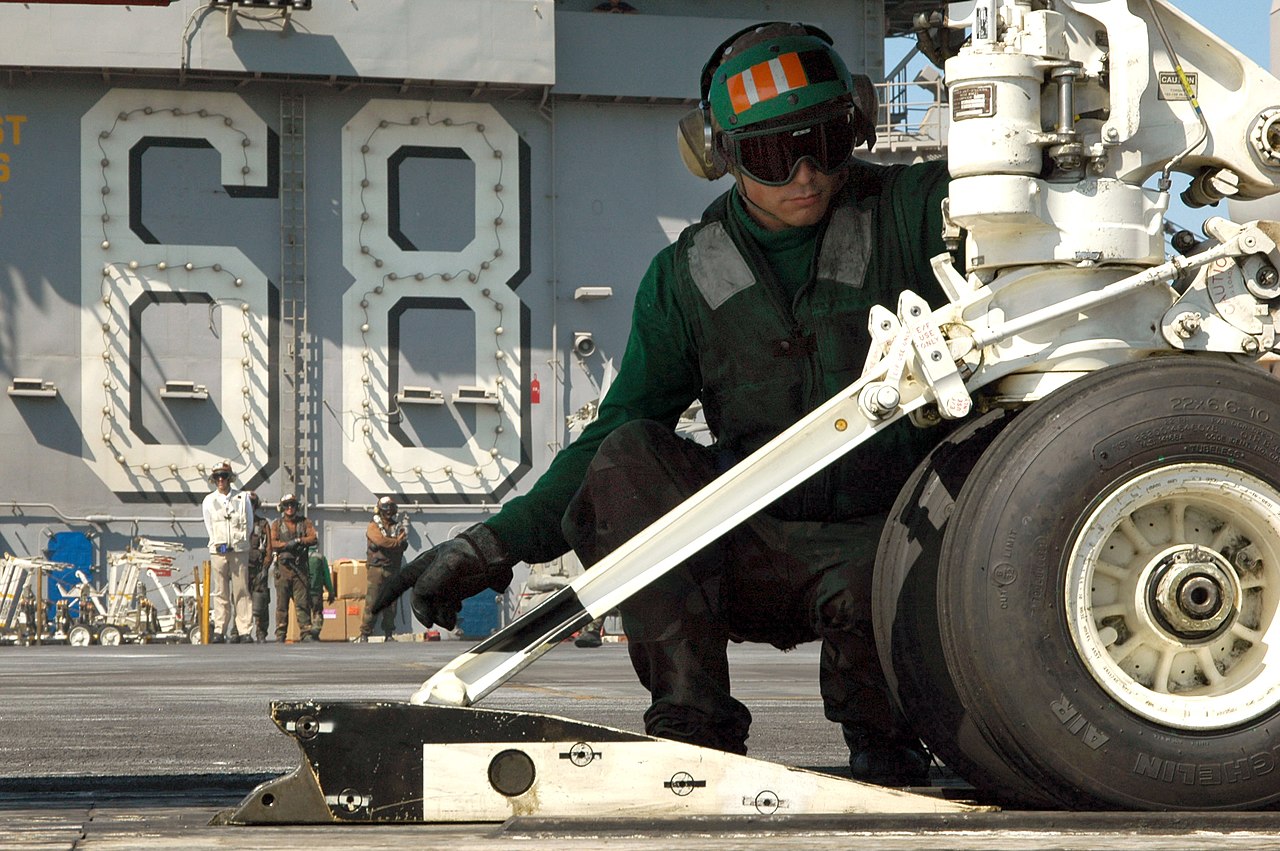
A deck crewman hooks a Super Hornet up to the catapult
Supersonic flight is only one of three main capabilities that separate the Hornet from most of Boeing's other airplanes. The other two are the need for maneuverability in air combat, and the requirement that it operate from aircraft carriers. The Hornet is quite maneuverable, and the leading edge extensions forward help protect the engines from airflow disruptions and keep control at high angles of attack.1 The entire aircraft is aerodynamically unstable to enhance maneuverability, and uses computers to keep it flying safely, and the airframe is rated to withstand 7.5G while maneuvering. Carrier operations mean that the tricycle landing gear is built much more heavily than is typical for land-based fighters, able to withstand the "controlled crash" that is a carrier landing. Aft is the retractable arresting hook, which snags the wires on the carrier, while the nose gear has a bar installed to engage with the catapult for launch. Lastly, to save space on the carrier deck, the outer portions of the wings fold up.
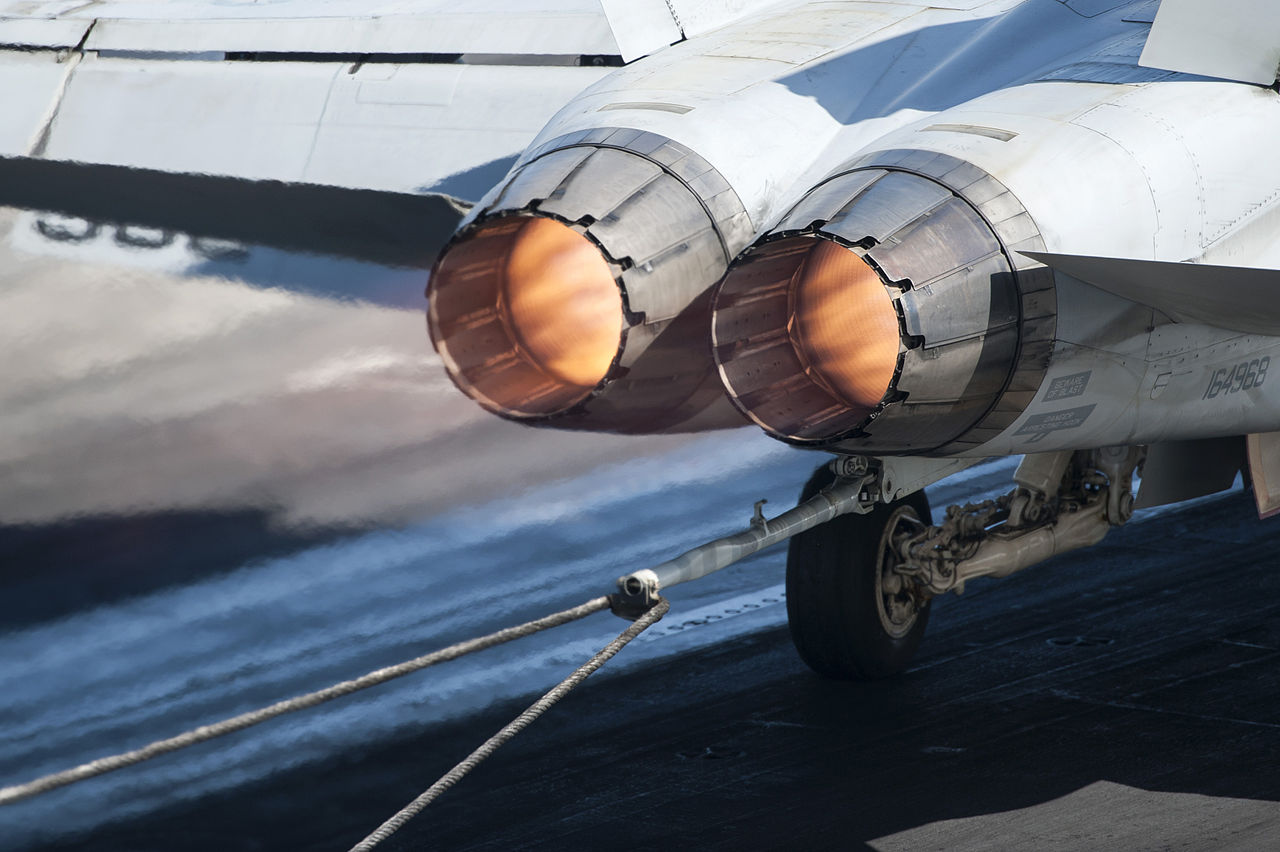
A Hornet in full afterburner2 snags an arresting cable with its hook
Which brings us to the Hornet as a combat unit. To be effective in combat, you generally have to be able to detect the target, and the Hornet has a number of different sensor systems. One is the Mk 1 eyeballs of the pilot and backseater (if present). These are housed in a bubble canopy that provides all-around visibility and is treated with a coating that makes it reflect radar. This actually makes the aircraft stealthier, as the curved canopy sends most of the signal away from the transmitter, while the cockpit is full of corner reflectors that would send it back. The Mk 1 eyeballs can also be enhanced with night vision devices if operating after dark. To give even better night capability, most F/A-18s carry a targeting pod fitted with a sophisticated IR camera and laser designator. Early on, this was the AAS-38 NITE HAWK, more recently replaced by the ASQ-228 ATFLIR. The advantage of a pod is that it is self-contained, and can be maintained, upgraded or replaced without interfering with the aircraft itself. The same feature is also used for reconnaissance pods, which are carried when better pictures of the ground are needed.
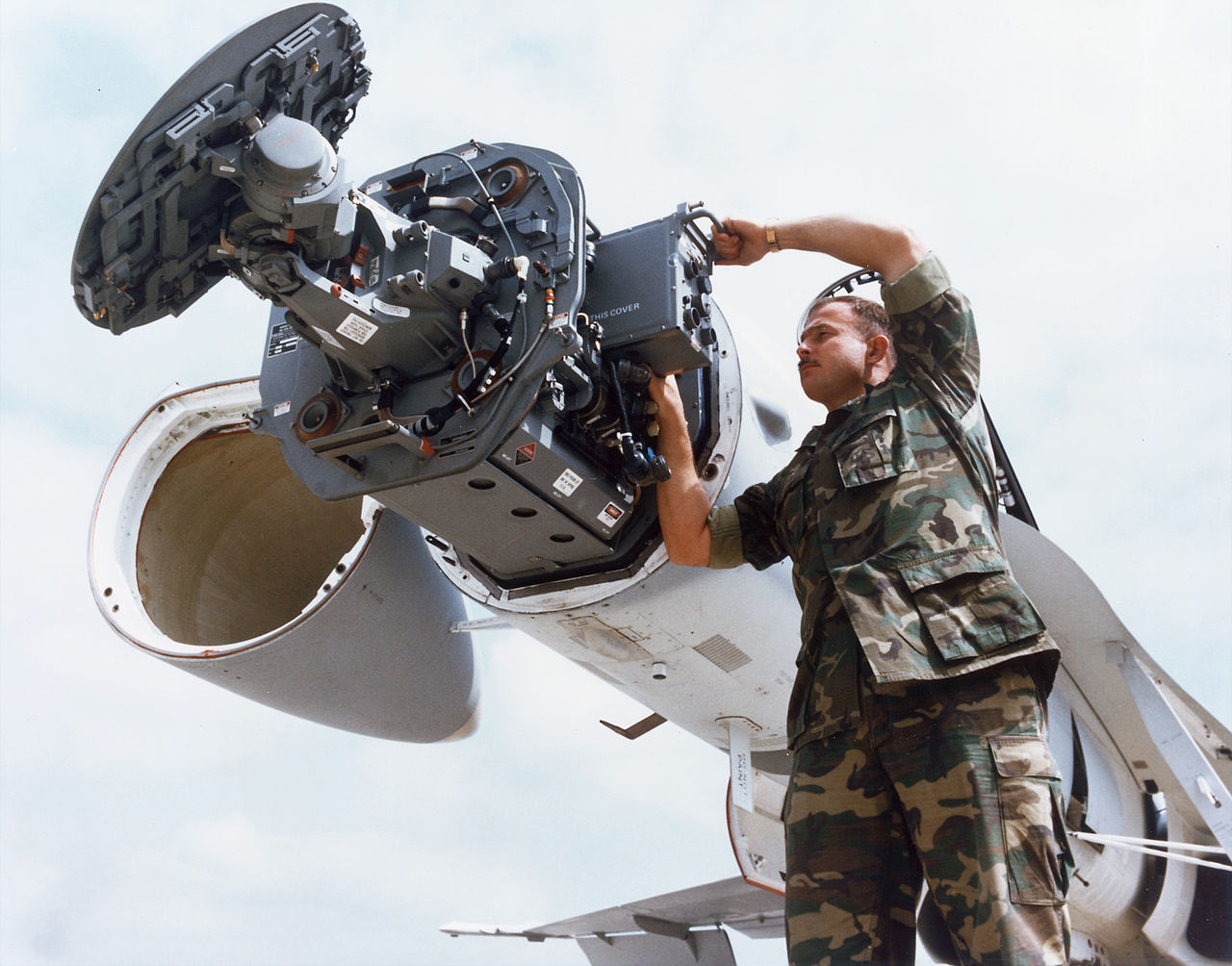
A technician maintains the APG-65 radar
Nor is the Hornet short on electronic sensors. The main one is the radar, initially the APG-65 and APG-73, but more recently the APG-79 AESA. All are capable of operating in a number of different modes, including air search out to ranges of 80-100 miles with the ability to track multiple targets while scanning for others, a single-target tracking mode for the AIM-7 Sparrow missile, and a mode that provides short-range information for the gunsight. There's a ground-mapping mode which can pick out rough terrain, a radar-assisted bombing mode, a sea-search mode that can filter out wave clutter and a mode that can produce high-resolution ground mapping mode using synthetic aperture radar (SAR). Backing up the radar is an ALR-67 radar warning receiver, capable of picking up hostile radar signals and cuing the various defensive systems. These include not only fairly conventional radar jammers and chaff/flare dispensers, but also a towed decoy, which is effective against missiles capable of ignoring stationary chaff.
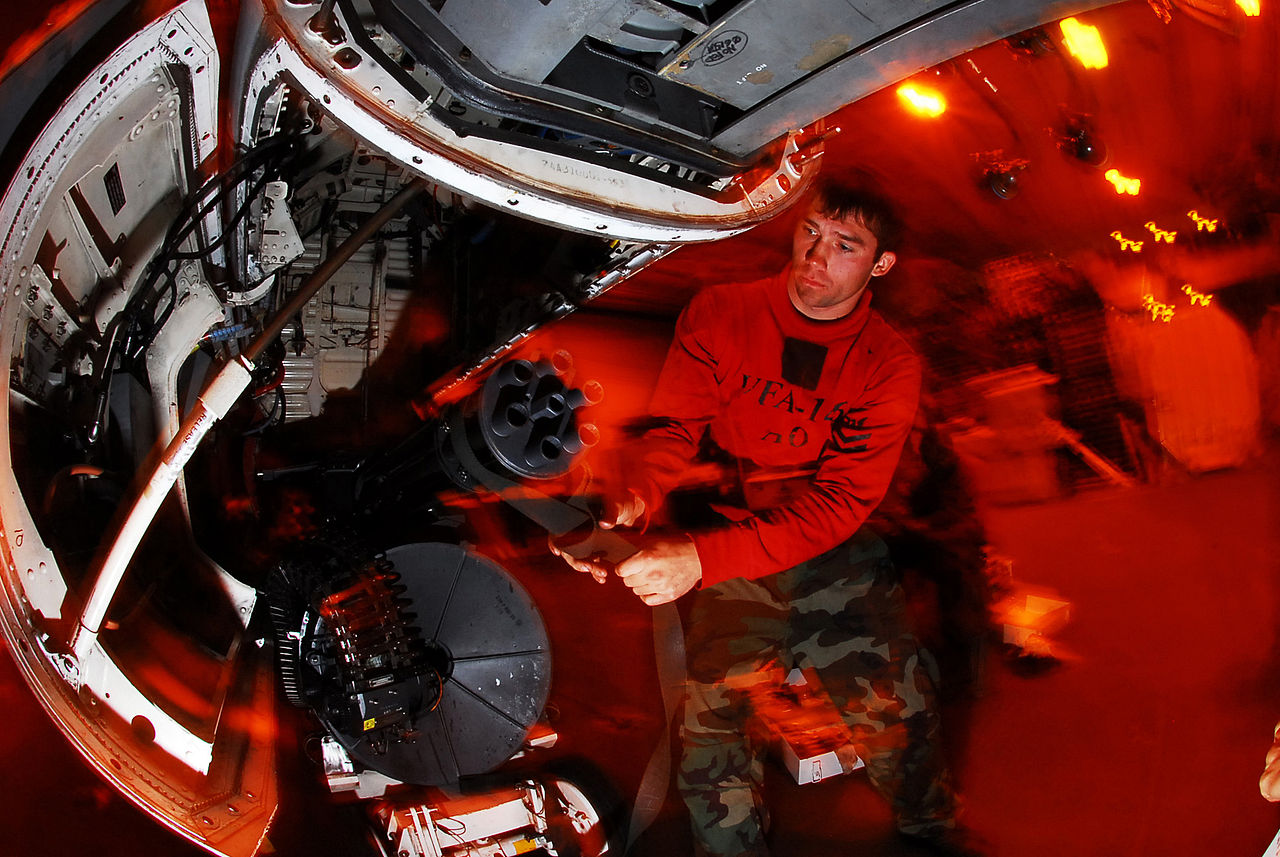
An M61 gatling gun is reinstalled after maintenance
That brings us nicely to the Hornet's weapon loadout. The only internal weapon carried by either model is the M61 Vulcan gatling gun. This six-barreled 20mm weapon has been standard on American fighters since the early 60s, and is also used by the Phalanx CIWS system. The Hornet's gun is mounted in the nose behind the radar, and has a 578-round magazine, which it can fire at either 4,000 or 6,000 rounds per minute. Possible targets include other aircraft and ground targets, and it is quite effective, if short-ranged, against both.
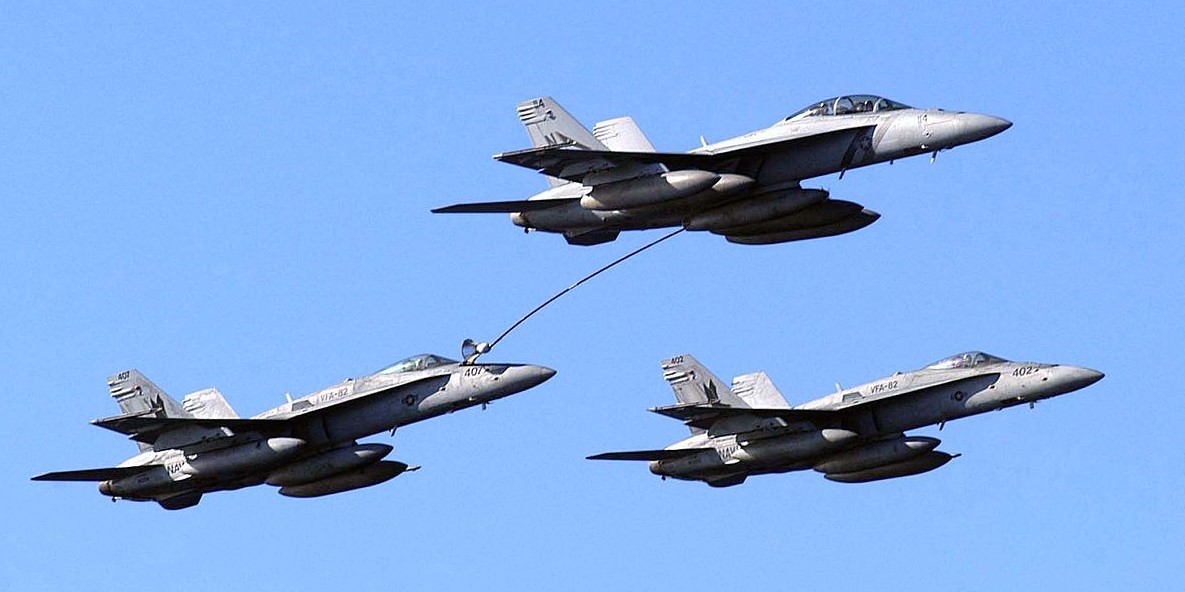
A Super Hornet passes fuel to a Legacy Hornet
The rest of the weapons are carried on external pylons mounted on the wings and under the fuselage. At the very outer edges of the Hornet's wing are a pair of missile rails, which almost always carry AIM-9 Sidewinder short-range IR-guided air-to-air missiles, although other weapons can be mounted there. Also intended for air-to-air missiles are a pair of pylons on the lower corners of the fuselage, outboard of the engines. These were originally designed for the longer-range AIM-7 Sparrow, but these days usually carry either the AIM-120 AMRAAM that replaced the Sparrow or a sensor pod, depending on the mission. More versatile are the centerline pylon and the wing pylons, two under each wing for the Legacy Hornet and three for the Super Hornet. The centerline pylon and all but the outermost pair of wing pylons are plumbed to carry extra fuel tanks, which can be dropped in an emergency. Because of the relatively limited range of both aircraft, at least two wing stations are almost always used this way. The Super Hornet's centerline station is also fitted to carry a buddy refueling store, which can trail a hose for the probe-and-drogue refueling system, which the Hornet is equipped to take fuel from using a retractable probe on the starboard side forward of the cockpit. Since the retirement of the S-3 Viking in 2009, the Super Hornet has had to carry the entire onboard aerial refueling load for the carriers. This has increased the strain on the strike fighter squadrons, strain that will hopefully be relieved when the unmanned MQ-25 Stingray arrives in the fleet in the next few years.
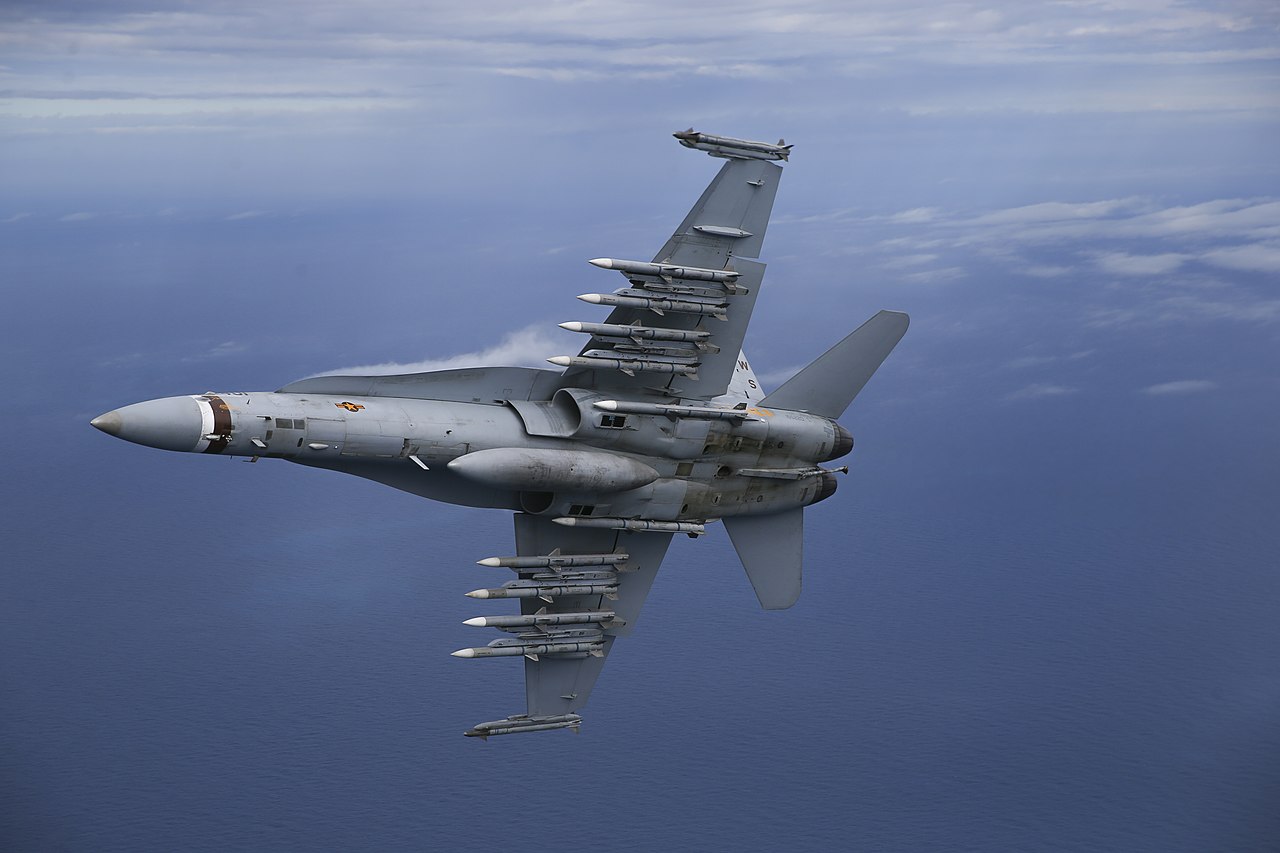
A Marine Hornet with 10 AMRAAMs, far more than would be carried on a normal mission
But fuel is never the main mission (unless you're the tanker), and the assigned mission will determine what mix of stores the pylons carry. For instance, if the plane is assigned to Combat Air Patrol, protecting the carrier in case any enemies show up, it will probably carry three fuel tanks, 2 AIM-120s and 2 AIM-9s. If air combat is likely, for instance escorting a strike on a hostile country, then more AIM-120s will be carried, possibly at the expense of some fuel tanks.
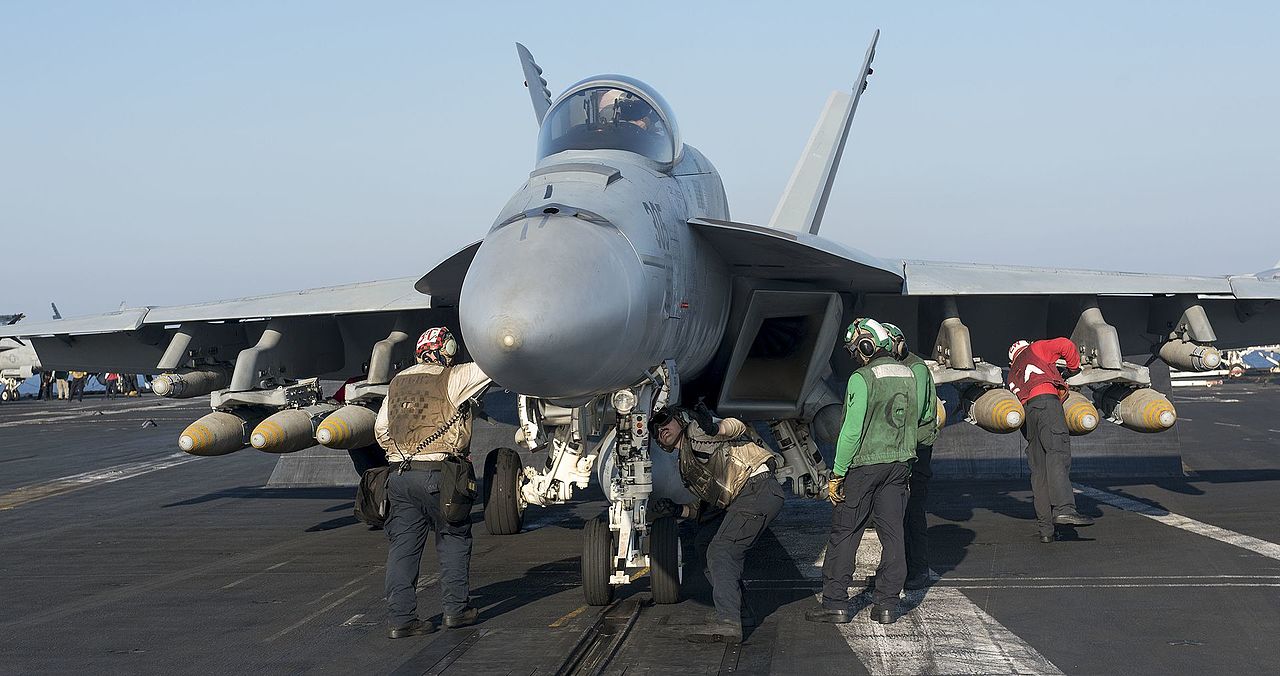
A Super Hornet loaded with JDAMs
As a multi-role aircraft, a Hornet assigned to ground-attack missions will still carry air-to-air weapons, at least the wingtip Sidewinders, and for the Super Hornet quite probably a pair of AIM-120s as well on the outboard stations.3 The rest of the weapons loadout would be determined by exactly what sort of target needs to be destroyed, and how dangerous it is nearby. If there are strong air defenses, then some aircraft will be assigned to SEAD4 and carry AGM-88 HARM anti-radiation missiles to shut them down violently, possibly in conjunction with ITALD decoys. For targets where even this isn't enough to be safe getting in close, JSOW glide bombs or SLAM and JASSM cruise missiles would be used against land targets. Enemy warships almost certainly fall into the category of things it is unhealthy to get close to, and to deal with them, the options are either the relatively short-ranged Harpoon or the much longer-ranged LRASM. But standoff weapons are expensive, so in cases where it is safe to get in close, the planners prefer to do so.
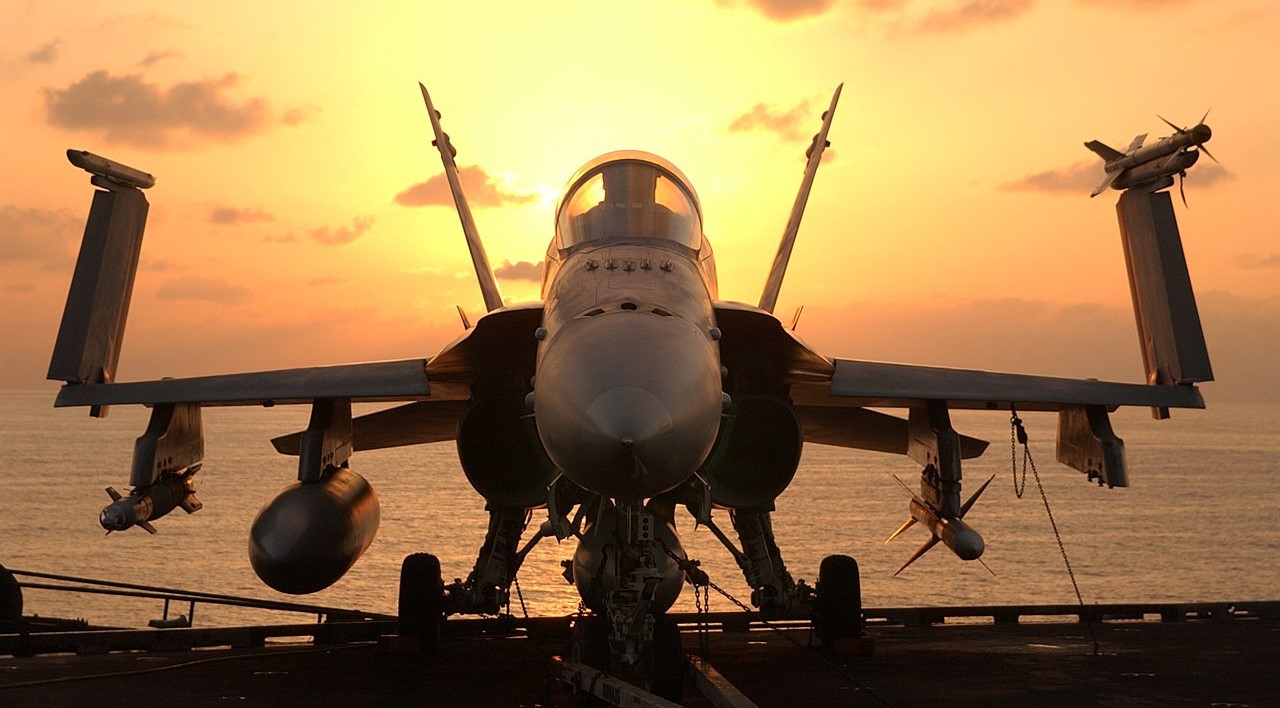
A Hornet, ready for the next mission
When the Hornet originally entered service, the main weapons of choice for ground attack were the Mk 82 (500 lb) and Mk 83 (1000 lb) iron bombs, delivered in a steep dive and using the Hornet's superb weapons computer. But while this technique can be shockingly accurate, it's also quite difficult and dangerous, and these days, guided weapons are all but ubiquitous, in the form of Paveways and JDAMs. The Hornet is equipped to carry other weapons, including Maverick missiles, various cluster bombs, Quickstrike mines and unguided rockets, but these are rarely used today.
Next time, we'll take a look at the combat career of the Hornet family, as well as its service outside the US.
1 Angle of attack is basically the angle between the direction the airplane is pointing and the direction it is moving in pitch. ⇑
2 Afterburner is selected during carrier landings in case the hook "bolters" and misses the wire, so the plane can take off again. ⇑
3 The four inboard stations on the Super Hornet are rated to carry 2,600 lb each, while the outboard stations are limited to 1,150 lb. All four stations on the Legacy Hornet are rated to 2,600 lb. ⇑
4 Suppression of Enemy Air Defenses. ⇑

Comments
Does the ALR-67 detect hostile signals and activate them in order ("queueing" them) or tell them where to look ("cueing" them)?
So versatile! I forgot that they were adapted to carry Harpoons (aka SLAM) and cruise missiles (aka LRASM).
Looking forward to the next part!
Why would a Navy attack aircraft not be cleared to carry anti-ship missiles?
Seems kind of basic to the idea of a naval attack aircraft that it be able to sink ships.
Money and lack of missions. For the last 30 years or so, anti-shipping strike wasn't that high on the list of missions for the carriers, and integrating a new missile is going to be tens of millions of dollars.